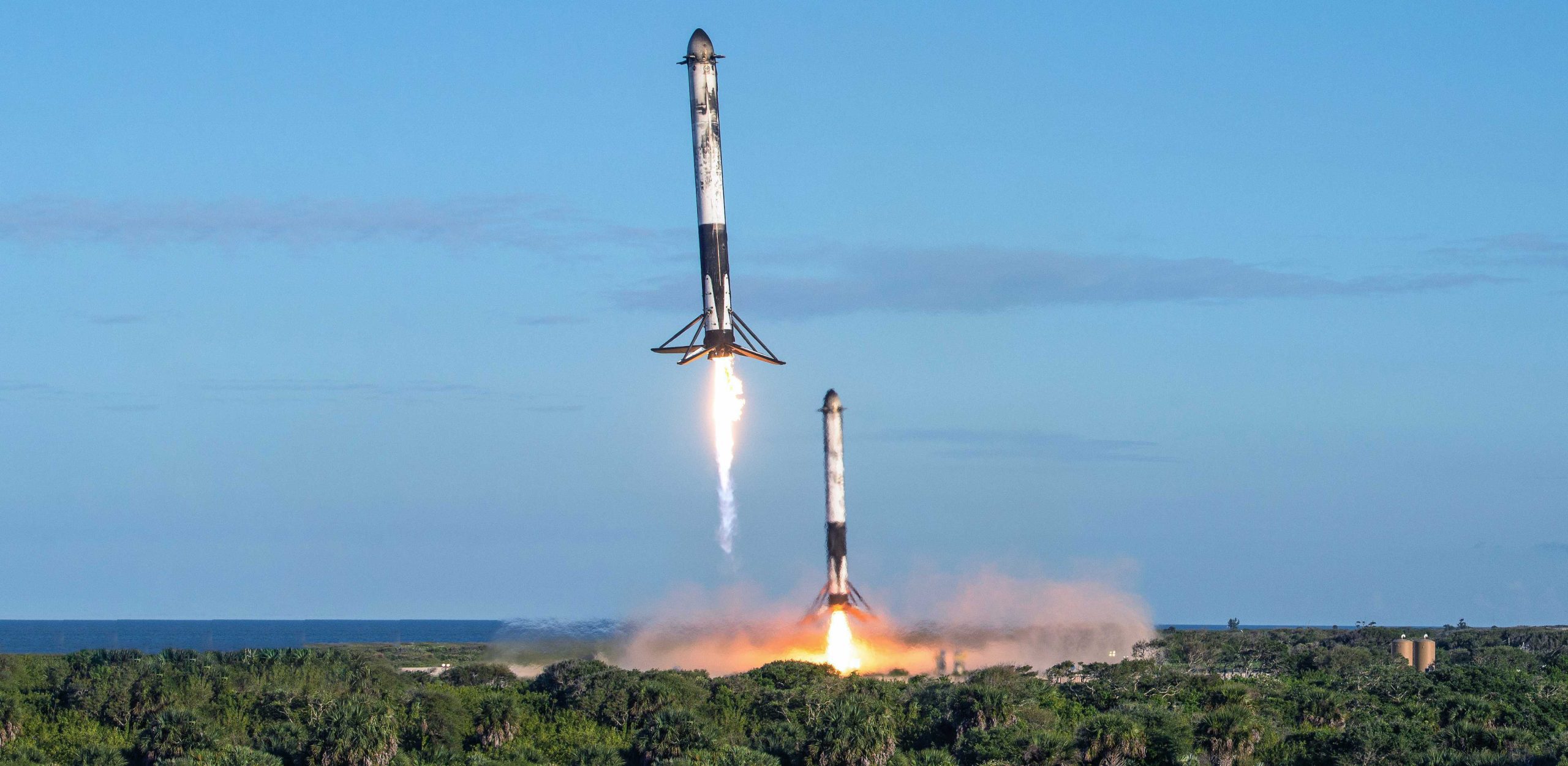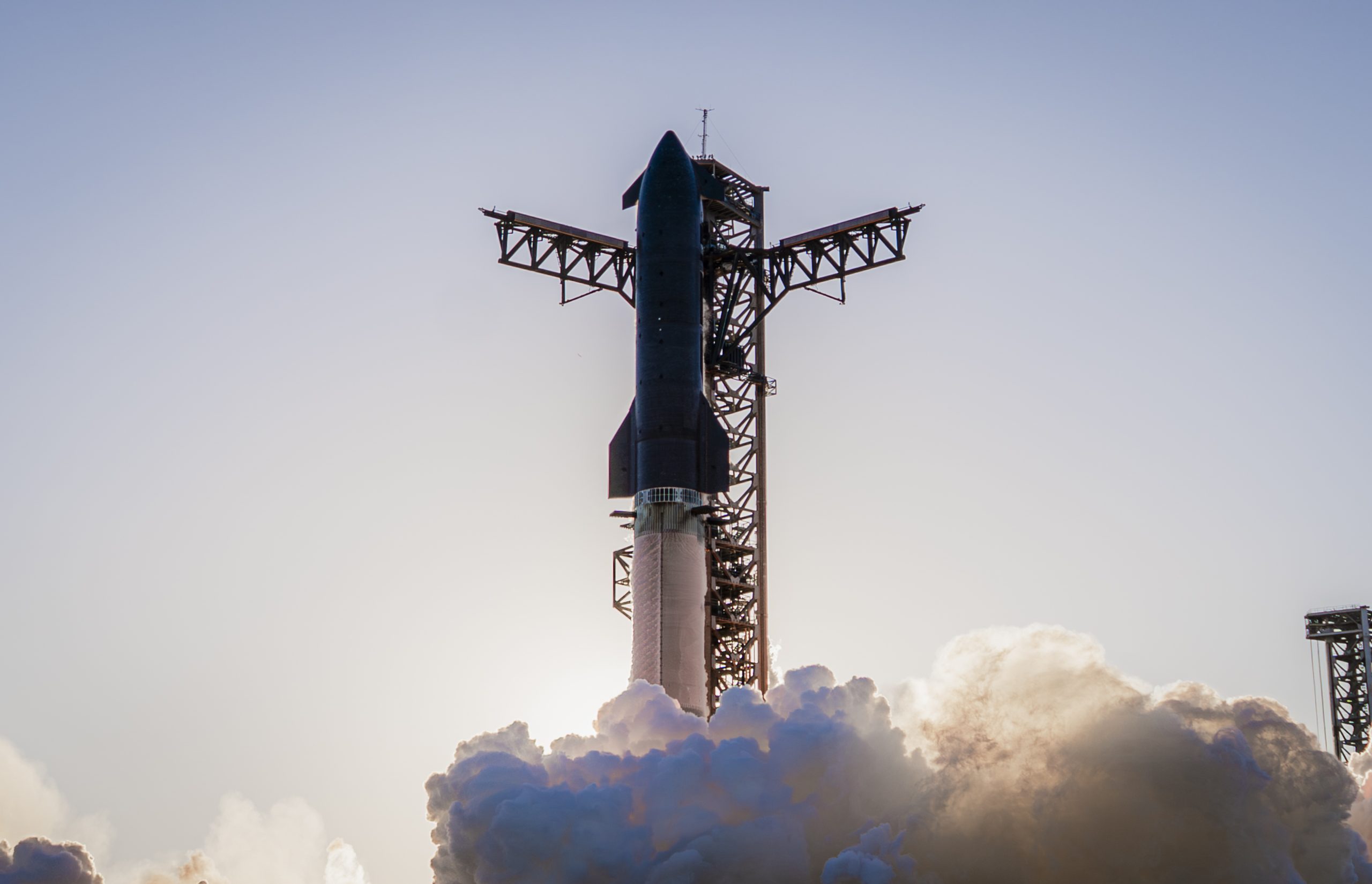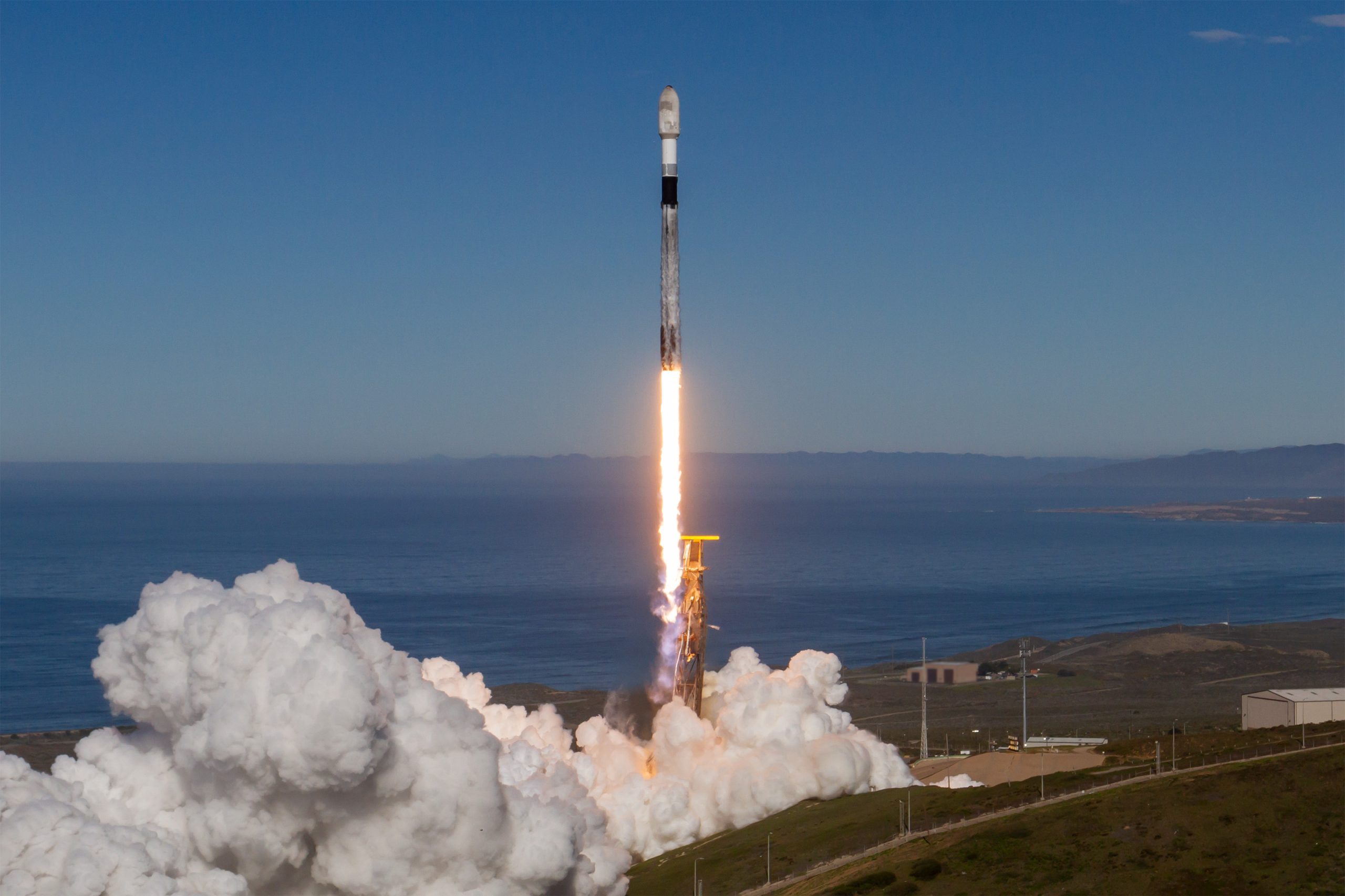

SpaceX
SpaceX’s third Falcon Heavy launch is just one month away
SpaceX is exactly one month away from Falcon Heavy’s next scheduled launch, an important mission for the US Air Force known as Space Test Program 2 (STP-2). Carrying 24 satellites of various sizes, Falcon Heavy is scheduled to lift off for the third time as early as June 22nd.
In support of the mission, SpaceX will need to completely integrate Falcon Heavy and prepare the rocket for a routine static fire test approximately one week prior to launch, sometime in mid-June. STP-2 will be critical to both SpaceX and the USAF for a number of reasons, ranging from rocket reusability to the future of US military launch procurement.
ICYMI: LightSail 2 is set to launch next month aboard a #SpaceX Falcon Heavy! Our citizen-funded solar sail is officially scheduled to lift off on 22 June 2019: https://t.co/J2AC5JQ1Kr pic.twitter.com/lC1MJoeh3C— Planetary Society (@exploreplanets) May 21, 2019
Rapid Falcon Heavy reuse
From a technological standpoint, Falcon Heavy Flight 3 will be a milestone in large part due to its reuse of two Falcon Heavy side boosters, previously flown on April 11th as part of Falcon Heavy’s Arabsat 6A commercial launch debut. Around eight minutes after launching the ~6450 kg (14,200 lb) satellite on its way to an exceptionally high transfer orbit of 90,000 km (56,000 mi), side boosters B1052 and B1053 completed flawless landings at LZ-1 and LZ-2.
Both boosters were quickly ‘broken over’ (brought horizontal) and transported to Pad 39A’s main hangar for inspection and refurbishment. Relative to almost all other Block 5 boosters, Falcon Heavy Flight 2’s side boosters were subjected to a uniquely gentle reentry thanks to a lower velocity stage separation. As such, they should be easier to turn around than most, but given that the boosters are also acting as partial pathfinders for the reuse of actual Falcon Heavy hardware, they are unlikely to break any records.
Sadly, the first Falcon Heavy Block 5 center core – B1055 – was toppled in high seas while still aboard drone ship Of Course I Still Love You (OCISLY), cutting short any possibility of future reuses of the thoroughly scorched booster. For unknown reasons, be it an unrelated USAF requirement or SpaceX simply choosing caution, plans already accounted for a new center core flying on STP-2, although both Arabsat 6A side boosters were to be reused. Believed to be B1057, that new Falcon Heavy center core completed its Texas acceptance testing in late April and shipped to Cape Canaveral, Florida soon after.
An Air Force first
Aside from offering a chance for SpaceX to tie its 72-day Falcon 9 turnaround record twice, STP-2 has unexpectedly become a keystone of the US military’s interest in certifying flight-proven rockets for military launches. The USAF has described the reuse of Falcon Heavy boosters on STP-2 as a step forward for all future reusable launch vehicles, but the reality is that SpaceX is and will remain the only player in town until 2022 at the earliest. The next closest entrant – Blue Origin’s New Glenn rocket – is unlikely to be ready for its launch debut before late ’21 or early ’22. ULA’s “SMART” reuse of Vulcan rocket engine sections is unlikely to be ready before the mid-2020s, likely 2024-2026.
SpaceX, however, has already reused Falcon 9 boosters more than 20 times on orbital-class missions, and the frequency of reuse is only likely to increase with the introduction of the final major Falcon 9 and Heavy upgrade, known as Block 5. Designed with a nominal lifespan of 10+ launches, each booster can support a huge number of missions and also offers the potential to dramatically reduce launch costs down the road. Additionally, as noted by VP of Launch Reliability Hans Koenigsmann, SpaceX firmly believes that reliability will come hand in hand with routine reuse, as each recovered booster can serve as a treasure trove of data. Thanks to reusability, SpaceX can fill recoverable boosters to the brim with cameras and gather full-resolution telemetry otherwise inaccessible for an expendable rocket.

The matter of launch costs is not a particularly significant concern of the US military, mainly a consequence of the incredibly disproportionate relationship between the cost of launch and the cost the military satellite payloads. An excellent example of this disparity can be found in SpaceX’s December 2018 launch of the USAF’s first GPS III satellite: SpaceX’s launch contract cost $82M, while the Lockheed Martin-built spacecraft aboard cost no less than ~$600M.
However, reusable rockets are quite plainly the future of space launch, evidenced by SpaceX’s meteoric rise and rapid cannibalization of the global commercial launch market. As a partial result, the survival of ULA – a Lockheed Martin-Boeing cooperative that builds the Delta IV and Atlas V rockets – is almost completely dependent upon military development and launch contracts. Blue Origin, however, is now offering the promise of an independently stable launch provider thanks to continual funding from owner Jeff Bezos, and reusability will be an absolute necessity if its massive New Glenn rocket is to succeed.

In short, the USAF is faced with a simple proposition: get behind reusable rockets or risk falling behind. SpaceX is more than happy to ease the conservative military branch into the new era, and Falcon Heavy’s STP-2 launch will be a major step in the right direction. Thanks to its reuse of two side boosters, Air Force officials will be able to observe the process of rapid refurbishment firsthand, providing information they will then use to develop certification requirements for flight-proven rockets. More generally, STP-2 will also act as a dedicated demonstration that SpaceX and the USAF will use to fully certify Falcon Heavy for military launches, hopefully ending Delta IV Heavy’s decade-long monopoly over military heavy lift.
Check out Teslarati’s Marketplace! We offer Tesla accessories, including for the Tesla Cybertruck and Tesla Model 3.

News
SpaceX reportedly mulling IPO, eyeing largest of all time: report
“I do want to try to figure out some way for Tesla shareholders to participate in SpaceX. I’ve been giving a lot of thought to how to give people access to SpaceX stock,” Musk said.

SpaceX is reportedly mulling an initial public offering, eyeing what would be the largest valuation at the time of availability of all time, a new report from Bloomberg said on Tuesday.
It is one of many reports involving one of Elon Musk’s companies and a massive market move, as this is not the first time we have seen reports of an IPO by SpaceX. Musk himself has also dispelled other reports in the past of a similar nature, including an xAI funding round.
SpaceX and Musk have yet to comment on the report. In the past, untrue reports were promptly replied to by the CEO; this has not yet gained any response, which is a good sign in terms of credibility.
Musk has discussed a potential IPO for SpaceX in recent months, as the November 6 shareholder meeting, as he commented on the “downsides” of having a public company, like litigation exposure, quarterly reporting pressures, and other inconveniences.
Nevertheless, Musk has also said he wants there to be a way for Tesla shareholders to get in on the action. At the meeting in early November, he said:
“I do want to try to figure out some way for Tesla shareholders to participate in SpaceX. I’ve been giving a lot of thought to how to give people access to SpaceX stock.”
Additionally, he added:
“Maybe at some point., SpaceX should become a public company despite all the downsides of being public.”
Musk has been historically reluctant to take SpaceX public, at times stating it could become a barrier to colonizing Mars. That does not mean it will not happen.
Bloomberg’s report cites multiple unidentified sources who are familiar with the matter. They indicate to the publication that SpaceX wants to go public in mid-to-late 2026, and it wants to raise $30 billion at a valuation of around $1.5 trillion.
This is not the first time SpaceX has discussed an IPO; we reported on it nine years ago. We hope it is true, as the community has spoken for a long time about having access to SpaceX stock. Legendary investor Ron Baron is one of the lucky few to be a SpaceX investor, and said it, along with Tesla, is a “lifetime investment.”
Tesla bull Ron Baron reveals $100M SpaceX investment, sees 3-5x return on TSLA
The primary driver of SpaceX’s value is Starlink, the company’s satellite internet service. Starlink contributes 60-70 percent of SpaceX’s revenue, meaning it is the primary value engine. Launch services, like Falcon 9 contracts, and the development of Starship, also play supporting roles.
News
SpaceX reaches incredible milestone with Starlink program

SpaceX reached an incredible milestone with its Starlink program with a launch last night, as the 3,000th satellite of the year was launched into low Earth orbit.
On Monday, SpaceX also achieved its 32nd flight with a single Falcon 9 rocket from NASA’s Kennedy Space Center.
The mission was Starlink 6-92, and it utilized the Falcon 9 B1067 for the 32nd time this year, the most-used Falcon booster. The flight delivered SpaceX’s 3000th Starlink satellite of the year, a massive achievement.
There were 29 Starlink satellites launched and deployed into LEO during this particular mission:
Falcon 9 launches 29 @Starlink satellites from Florida pic.twitter.com/utKrXjHzPN
— SpaceX (@SpaceX) December 9, 2025
SpaceX has a current goal of certifying its Falcon boosters for 40 missions apiece, according to Spaceflight Now.
The flight was the 350th orbital launch from the nearby SLC-40, and the 3,000 satellites that have been successfully launched this year continue to contribute to the company’s goal of having 12,000 satellites contributing to global internet coverage.
There are over five million users of Starlink, the latest data shows.
Following the launch and stage separation, the Falcon 9 booster completed its mission with a perfect landing on the ‘Just Read the Instructions’ droneship.
The mission was the 575th overall Falcon 9 launch, highlighting SpaceX’s operational tempo, which continues to be accelerated. The company averages two missions per week, and underscores CEO Elon Musk’s vision of a multi-planetary future, where reliable connectivity is crucial for remote work, education, and emergency response.
As Starlink expands and works toward that elusive and crucial 12,000 satellite goal, missions like 6-92 pave the way for innovations in telecommunications and enable more internet access to people across the globe.
With regulatory approvals in over 100 countries and millions of current subscribers, SpaceX continues to democratize space, proving that reusability is not just feasible, but it’s also revolutionary.
Elon Musk
Elon Musk gives nod to SpaceX’s massive, previously impossible feat
It was the booster’s 30th flight, a scenario that seemed impossible before SpaceX became a dominant force in spaceflight.

Elon Musk gave a nod to one of SpaceX’s most underrated feats today. Following the successful launch of the Transporter-15 mission, SpaceX seamlessly landed another Falcon 9 booster on a droneship in the middle of the ocean.
It was the booster’s 30th flight, a scenario that seemed impossible before SpaceX became a dominant force in spaceflight.
Elon Musk celebrates a veteran Falcon 9 booster’s feat
SpaceX completed another major milestone for its Smallsat Rideshare program on Friday, successfully launching and deploying 140 spacecraft aboard a Falcon 9 from Vandenberg Space Force Base. The mission, known as Transporter-15, lifted off two days later than planned after a scrub attributed to a ground systems issue, according to SpaceFlight Now. SpaceX confirmed that all payloads designed to separate from the rocket were deployed as planned.
The Falcon 9 used for this flight was booster B1071, one of SpaceX’s most heavily flown rockets. With its 30th mission completed, it becomes the second booster in SpaceX’s fleet to reach that milestone. B1071’s manifest includes five National Reconnaissance Office missions, NASA’s SWOT satellite, and several previous rideshare deployments, among others. Elon Musk celebrated the milestone on X, writing “30 flights of the same rocket!” in his post.
Skeptics once dismissed reusability as unfeasible
While rocket landings are routine for SpaceX today, that was not always the case. Industry veterans previously questioned whether reusable rockets could ever achieve meaningful cost savings or operational reliability, often citing the Space Shuttle’s partial reusability as evidence of failure.
In 2016, Orbital ATK’s Ben Goldberg argued during a panel that even if rockets could be reusable, they do not make a lot of sense. He took issue with Elon Musk’s claims at the time, Ars Technica reported, particularly when the SpaceX founder stated that fuel costs account for just a fraction of launch costs.
Goldberg noted that at most, studies showed only a 30% cost reduction for low-Earth orbit missions by using a reusable rocket. “You’re not going to get 100-fold. These numbers aren’t going to change by an order of magnitude. They’re just not. That’s the state of where we are today,” he said.
Former NASA official Dan Dumbacher, who oversaw the Space Launch System, expressed similar doubts in 2014, implying that if NASA couldn’t make full reusability viable, private firms like SpaceX faced steep odds.








